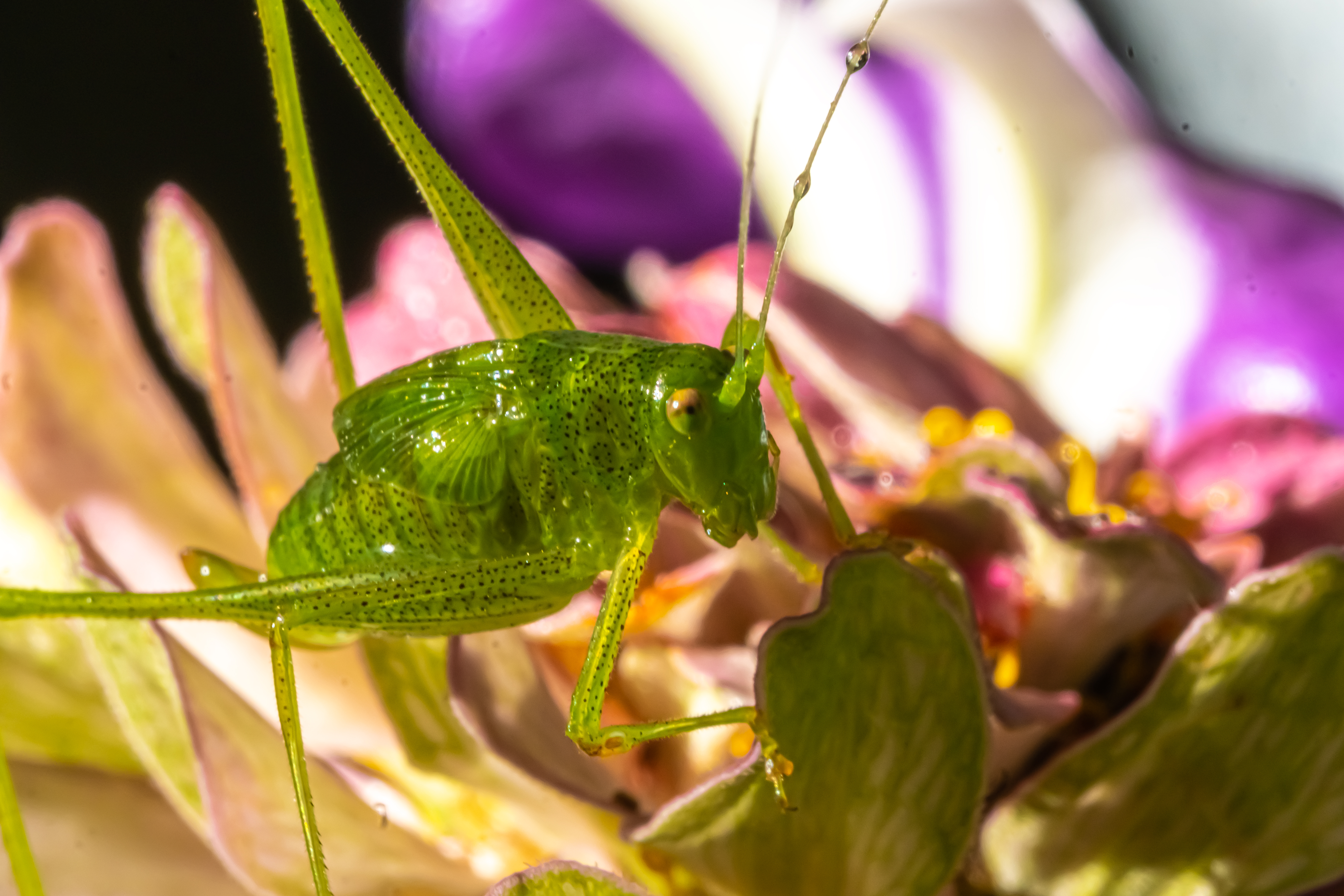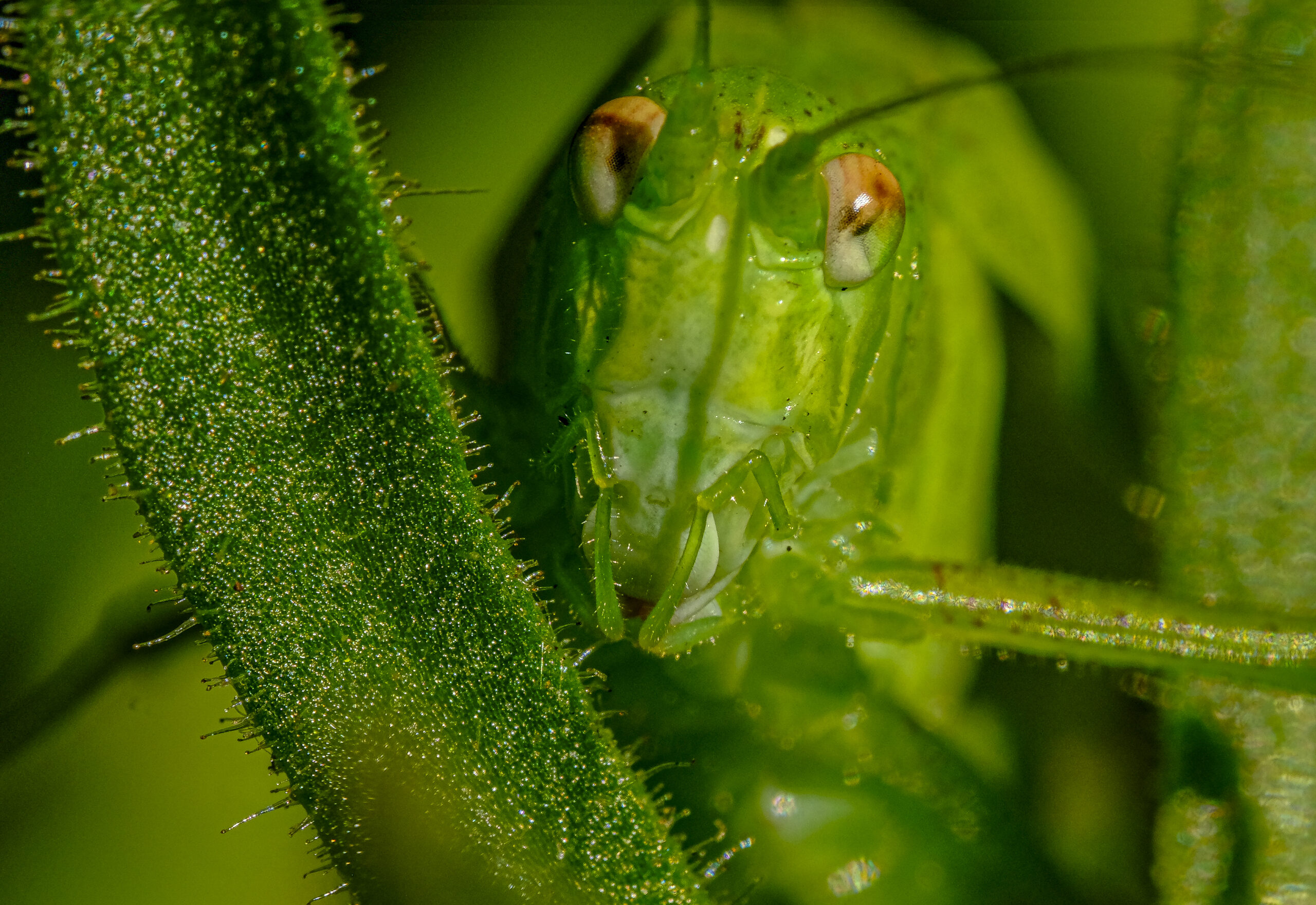Introduction:
Welcome to our comprehensive guide to Katydid, the intriguing insect that belongs to the family Tettigoniidae. We will explore the fascinating world of Katydid, its characteristics, habitat, lifecycle, and more. So, let’s dive right in and unravel the secrets of this remarkable insect.

1. What is a Katydid?
Katydid, also known as bush cricket, is an insect that belongs to the family Tettigoniidae. These insects are known for their distinctive appearance and incredible ability to camouflage themselves among leaves and branches. With their long antennae and vibrant green color, Katydid insects are truly captivating.
2. Physical Characteristics:
Katydid insects are typically green in color, providing them with excellent camouflage in vegetation. However, they can also be brown, yellow, or even pink. They have long, slender bodies, elongated wings, and large hind legs, which enable them to jump and fly. Additionally, Katydid insects have long antennae that aid them in sensing their surroundings.
3. Habitat and Distribution:
Katydid insects can be found in various habitats worldwide, including forests, grasslands, and gardens. They are particularly abundant in tropical regions. These insects prefer areas with abundant foliage, as it provides them with food and shelter. Their remarkable camouflage skills make them masters of disguise among leaves, twigs, and branches.
4. Diet and Feeding Habits:
Katydid insects are primarily herbivorous, feeding on a variety of plants, leaves, flowers, and fruits. Some species may also consume other insects if plant food is scarce. Their strong mandibles allow them to chew and consume plant matter efficiently.
5. Communication and Reproduction:
One of the most fascinating aspects of Katydid insects is their unique communication methods. Males produce distinctive sounds by rubbing their wings or legs together, creating a characteristic “katy-did” or “pharaoh” sound. These sounds serve as a means of attracting females for mating.
The mating rituals of Katydid insects are quite elaborate. After successful courtship, females lay their eggs in plant stems or leaves. The eggs hatch into nymphs, which undergo a series of molts before reaching adulthood.

6. Defense Mechanisms:
To protect themselves from predators, Katydid insects employ various defense mechanisms. Their primary defense is their remarkable ability to blend seamlessly with their surroundings, thanks to their camouflage. Some species also have spines or thorns on their bodies, which act as additional deterrents to predators.
7. Role in the Ecosystem:
Katydid insects play a crucial role in the ecosystem as herbivores. By consuming plant matter, they help regulate plant growth and maintain ecological balance. Additionally, they serve as a food source for many insectivorous animals, including birds, reptiles, and mammals.
Conclusion:
The world of Katydid insects is truly fascinating, from their incredible camouflage abilities to their unique communication methods. These insects provide us with a glimpse into the intricate workings of nature. By understanding and appreciating these remarkable creatures, we can foster a deeper appreciation for the biodiversity that surrounds us. So, next time you’re exploring nature, keep an eye out for these incredible insects and marvel at their beauty and adaptability.


















